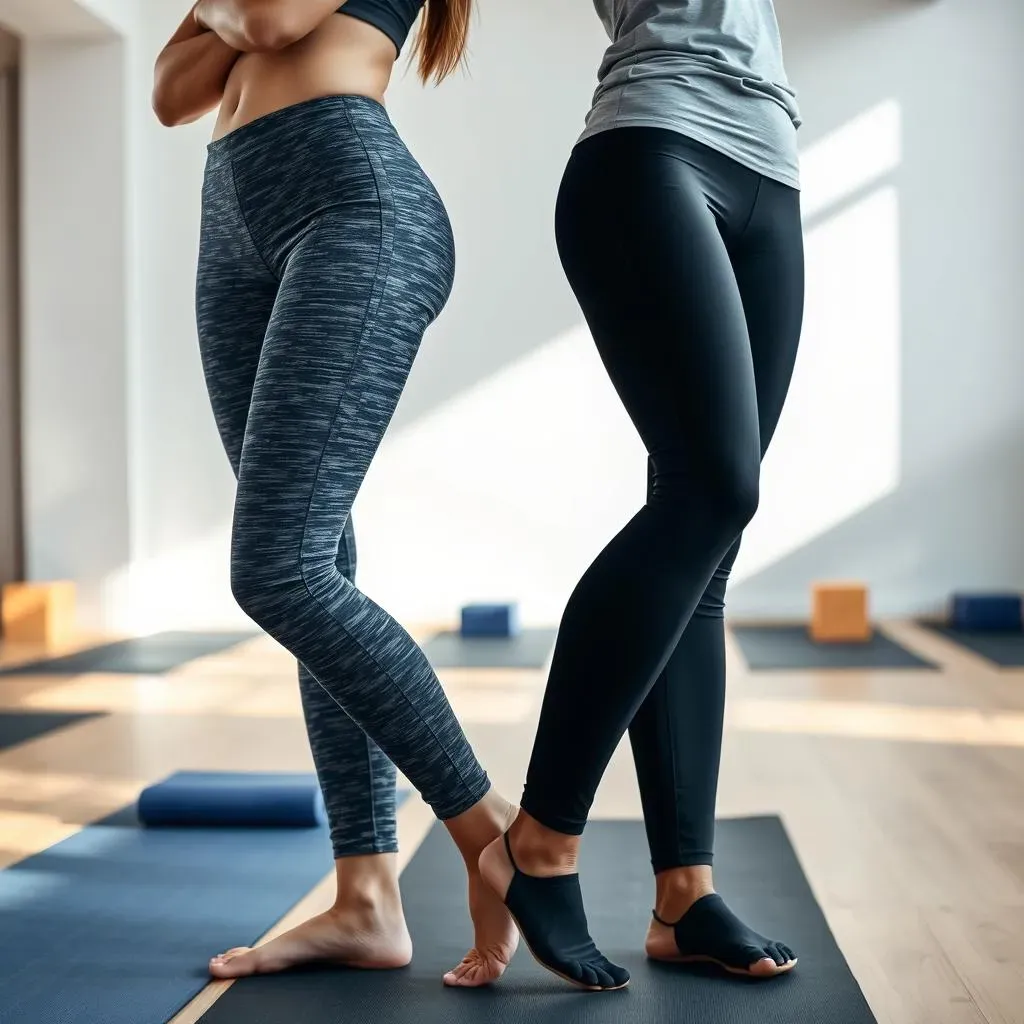Table of Contents
Stepping into the world of athleisure can be confusing! With so many similar-looking bottoms, it's easy to wonder: are yoga pants and leggings the same thing? At first glance, they might seem interchangeable, but a closer look reveals key distinctions. This article will unravel the mysteries surrounding these popular wardrobe staples. We'll explore the fundamental differences in fabric composition, examining the materials used and how they impact performance and comfort. Then, we'll dive into the nuances of style and fit, comparing the various cuts, waistbands, and overall aesthetics of yoga pants and leggings. Finally, we'll help you determine which bottom is best suited for your specific needs – whether you're hitting the yoga studio, conquering a workout, or simply lounging around the house. By the end, you'll have a clear understanding of the distinctions between yoga pants and leggings, empowering you to make informed choices for your wardrobe. So, let's get started and settle this age-old question: are yoga pants and leggings the same thing?
Are Yoga Pants and Leggings the Same Thing? Defining the Differences
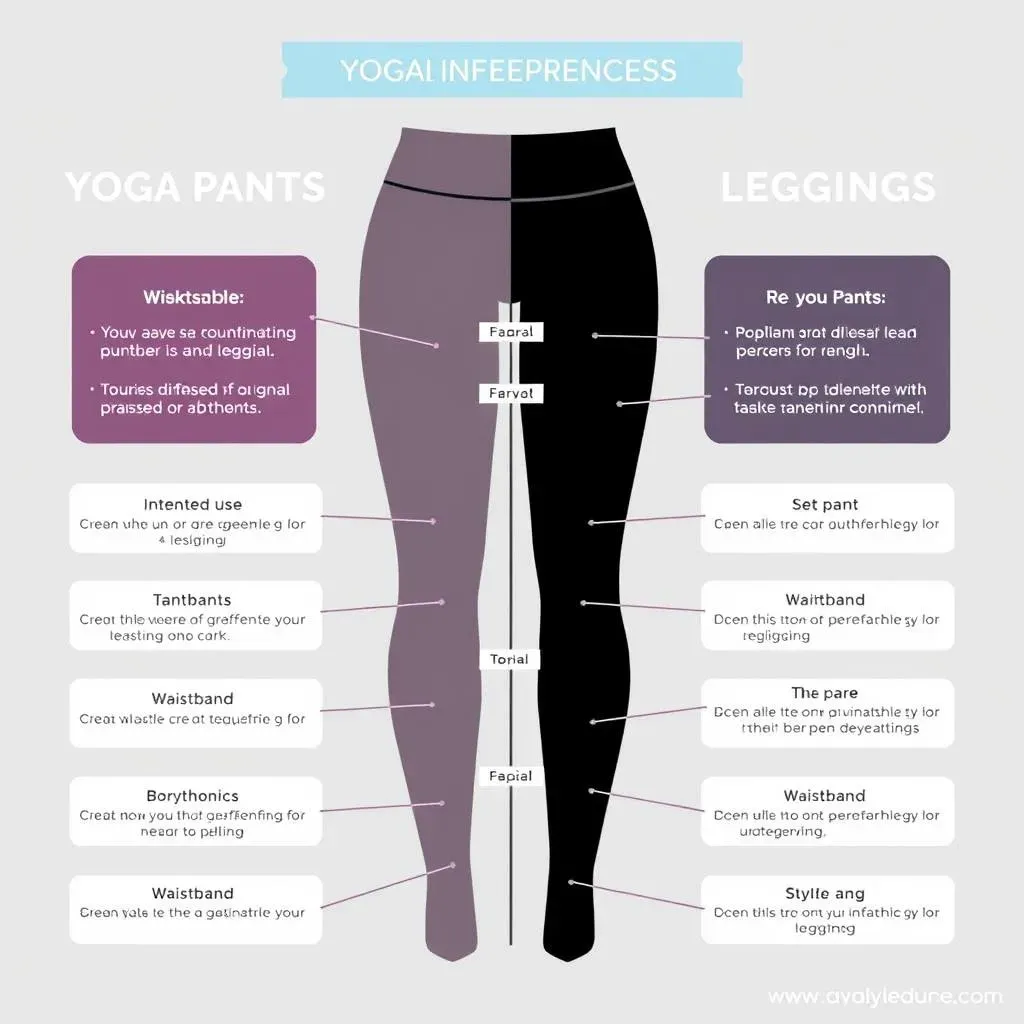
Are Yoga Pants and Leggings the Same Thing? Defining the Differences
The Basic Distinction: Intended Use
While the lines often blur, the core difference lies in their intended purpose. Leggings, historically, were undergarments, designed for warmth and layering. They're typically thinner, more form-fitting, and come in a vast array of colors and patterns. Think of them as the versatile chameleon of your wardrobe – perfect under skirts, dresses, or as a standalone casual piece. Yoga pants, on the other hand, are specifically designed for athletic activities, particularly yoga and similar exercises. They prioritize functionality, often incorporating features like moisture-wicking fabrics and a higher, more supportive waistband.
Feature | Leggings | Yoga Pants |
|---|---|---|
Primary Function | Layering, casual wear | Athletic wear, yoga |
Fabric Thickness | Generally thinner | Generally thicker |
Waistband | Lower, often simpler | Higher, often wider and more supportive |
Fabric and Function: A Key Differentiator
The materials used play a significant role. Leggings are often made from thinner, less structured fabrics like cotton blends, rayon, or spandex. These fabrics are comfortable and stretchy but may not provide the same level of support or moisture-wicking capabilities as yoga pants. Yoga pants typically use thicker, more performance-oriented fabrics such as nylon, polyester blends, or specialized moisture-wicking materials. These fabrics are designed to stretch and move with your body while keeping you dry and comfortable during intense physical activity. The increased thickness also provides better coverage and opacity, preventing those awkward see-through moments during downward-facing dog.
- Cotton/Spandex blends (Leggings): Soft, affordable, but may be see-through and less durable.
- Nylon/Polyester blends (Yoga Pants): Moisture-wicking, durable, often more expensive.
- Performance fabrics (Yoga Pants): Designed for specific activities, offering features like four-way stretch and breathability.
Beyond the Basics: Style and Design
While functionality is key, style also plays a significant role. Leggings come in a practically limitless range of styles, from skinny to wide-leg, cropped to full-length, and featuring various patterns and designs. They can be dressed up or down, making them highly versatile additions to any wardrobe. Yoga pants, while also available in various styles, tend to focus on a more athletic aesthetic. They often feature a higher waistband for support, sometimes with pockets for convenience, and may have a more tailored fit to prevent bunching or restriction during movement. However, the lines are increasingly blurred, with many brands offering "yoga leggings" that blend the comfort of leggings with the performance features of yoga pants.
The Fabric Factor: Material Matters in Yoga Pants vs. Leggings
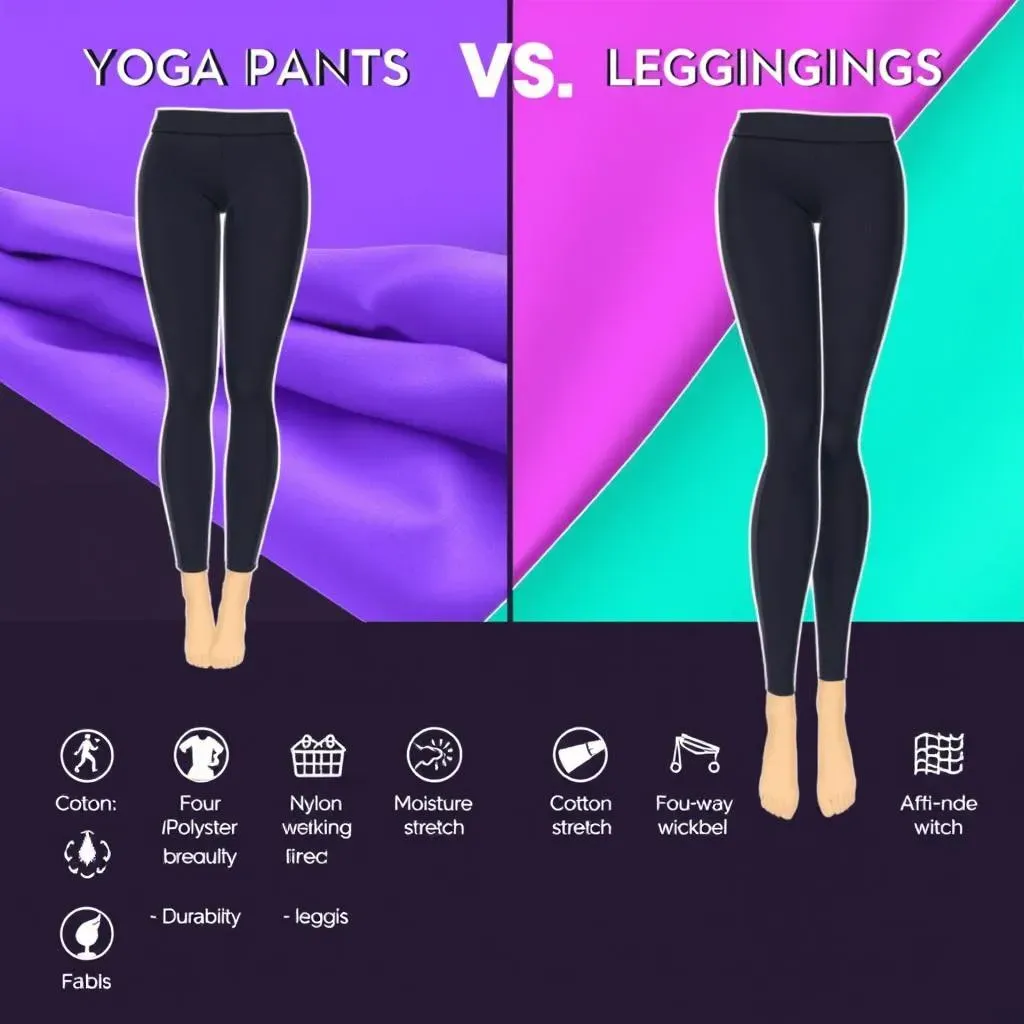
The Fabric Factor: Material Matters in Yoga Pants vs. Leggings
Let's talk fabrics! The material used dramatically impacts the performance and feel of both yoga pants and leggings. Think of it like this: you wouldn't wear a cotton t-shirt for a marathon, right? Similarly, the fabric choice dictates whether your bottoms will be comfortable for a casual stroll or a vigorous yoga session. Leggings often utilize cotton blends, rayon, or spandex. These are generally softer, more affordable, and offer decent stretch. However, they can be less durable, prone to pilling (those annoying little balls of fabric), and sometimes lack opacity, leading to unfortunate see-through situations. Yoga pants, on the other hand, frequently incorporate performance fabrics like nylon, polyester blends, or even specialized moisture-wicking materials. These are designed to withstand more intense activity, offering superior durability, breathability, and support. The thicker weave also ensures better coverage and prevents those embarrassing transparency issues.
Fabric Type | Typical Use | Pros | Cons |
|---|---|---|---|
Cotton/Spandex Blend | Leggings | Soft, comfortable, affordable | Can be see-through, less durable, may not wick moisture well |
Nylon/Polyester Blend | Yoga Pants | Durable, moisture-wicking, breathable | Can be more expensive, may feel less soft than cotton blends |
Performance Fabrics (e.g., Supplex, Lycra) | Yoga Pants | Superior stretch, recovery, moisture-wicking, often four-way stretch | Generally the most expensive option |
Beyond the basic types, there's a whole world of specialized performance fabrics designed for specific activities. Look for keywords like "four-way stretch," "moisture-wicking," or "anti-microbial" on labels. These features can make a huge difference in your comfort and performance, especially during intense workouts. Consider the climate and activity level when selecting your fabric. A lightweight, breathable fabric is ideal for hot yoga, while a slightly thicker fabric might be preferable for colder weather or more intense activities. Don't be afraid to experiment to find what works best for you!
- Consider the climate: Lightweight fabrics for hot weather, thicker fabrics for cold.
- Check for features: Four-way stretch, moisture-wicking, anti-microbial.
- Read reviews: See what other users say about the durability and comfort of the fabric.
Style and Fit: How Yoga Pants and Leggings Differ in Appearance and Function
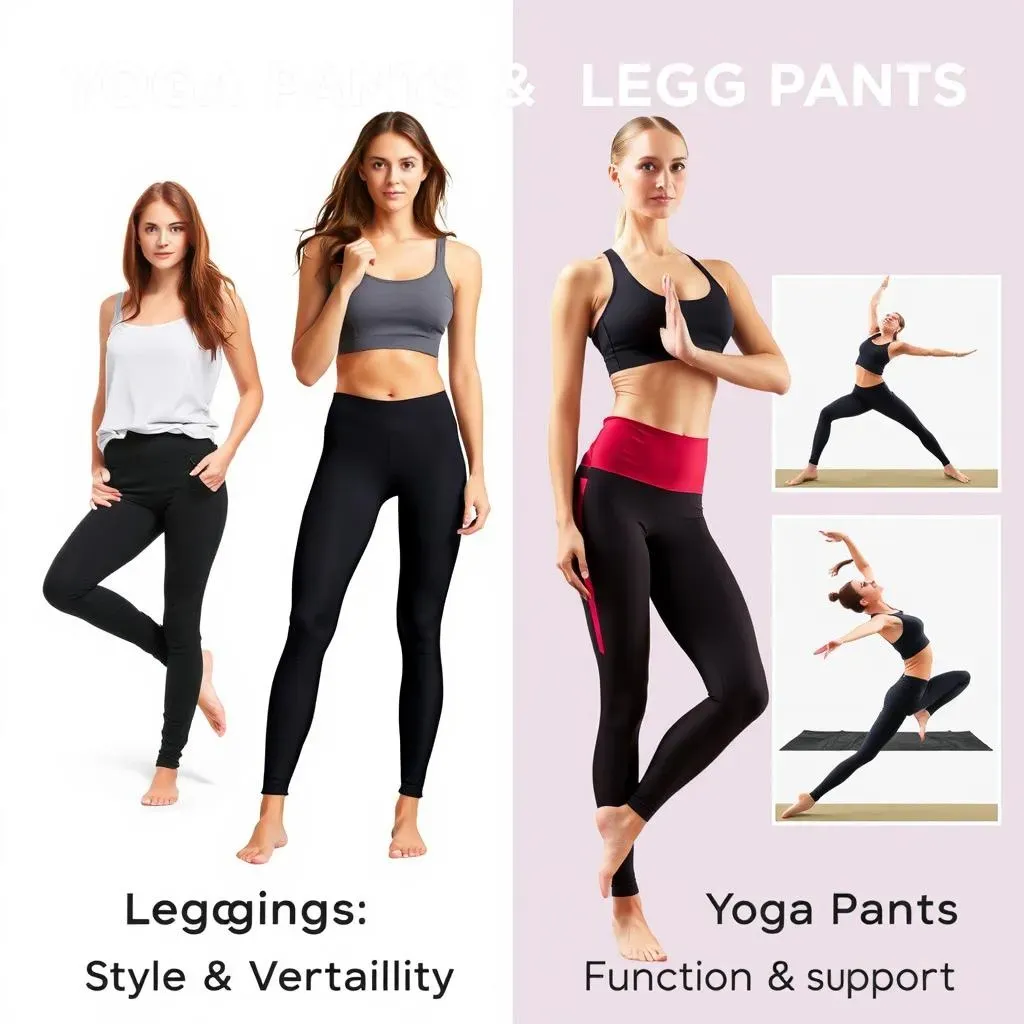
Style and Fit: How Yoga Pants and Leggings Differ in Appearance and Function
Leggings: The Chameleon of Casual Wear
Leggings are the ultimate chameleons of the fashion world. Their versatility is unmatched. They hug your legs closely, offering a streamlined silhouette that’s perfect for layering under skirts or dresses, or for creating a relaxed yet stylish casual look. The range of styles is astounding – from classic full-length leggings to cropped styles, capri lengths, and even wide-leg options. Patterns, colors, and textures are limitless, allowing you to express your personality and style preferences. While some leggings are designed for light activity, many are primarily intended for casual wear, comfort, and style. They're your go-to for running errands, lounging at home, or creating a chic, effortless outfit.
Legging Style | Best For |
|---|---|
Full-length | Layering, everyday wear |
Cropped | Showing off shoes, warmer weather |
Capri | Transitional weather, showing off ankles |
Wide-leg | More stylish, less athletic |
Yoga Pants: Designed for Movement and Support
Yoga pants, on the other hand, are all about functionality and support. Their design prioritizes freedom of movement and comfort during physical activity. You'll often find a higher waistband, designed to stay put during stretches and inversions. This waistband provides a secure and comfortable fit, preventing slippage and offering extra support to your core. While yoga pants are available in various styles, many maintain a more fitted look through the leg, preventing bunching or restriction. Many yoga pants also feature additional details like pockets – a practical addition for carrying your phone or keys during a workout. Think of them as the reliable workhorse of your activewear collection, built for performance and comfort.
- Higher waistband for support
- Often feature pockets
- More fitted leg for unrestricted movement
- Available in various lengths and styles
Are Yoga Pants and Leggings the Same Thing? Choosing the Right Bottom for Your Activity
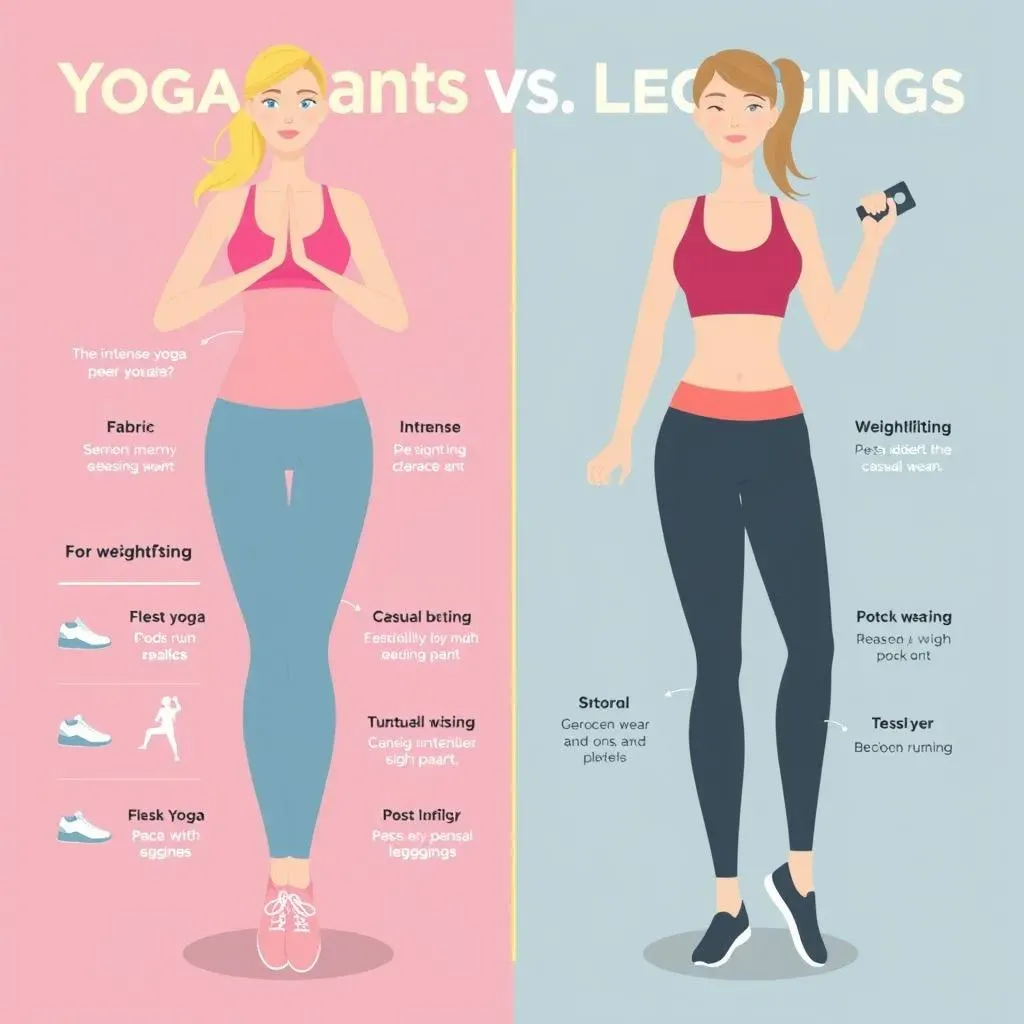
Are Yoga Pants and Leggings the Same Thing? Choosing the Right Bottom for Your Activity
Now that we've explored the differences in fabric and style, let's talk about choosing the right bottom for your activity. The decision hinges on the type of movement and comfort level you need. For high-intensity workouts like running, HIIT, or intense yoga practices, yoga pants are the clear winner. Their moisture-wicking fabrics, supportive waistbands, and durable construction are designed to keep you comfortable and supported throughout your session. Leggings, while comfortable for light exercise, might not provide the same level of support or breathability during strenuous activity. They can feel restrictive, ride up, or become transparent with sweat.
Activity | Best Choice | Why? |
|---|---|---|
Intense Yoga | Yoga Pants | Support, breathability, durability |
Running | Yoga Pants | Moisture-wicking, prevents chafing |
Weightlifting | Yoga Pants | Support, freedom of movement |
Casual Wear | Leggings | Versatility, comfort, style |
Layering | Leggings | Thin, form-fitting |
However, for casual wear, lounging, or layering, leggings often take the lead. Their comfort, affordability, and vast array of styles make them a versatile wardrobe staple. They're perfect for creating relaxed yet stylish outfits, and their thinner fabric makes them ideal for layering under skirts or dresses during cooler weather. Ultimately, the "best" choice depends entirely on your individual needs and preferences. Consider the level of activity, the weather conditions, and the overall look you're aiming for. Don't be afraid to experiment and find what works best for your body and lifestyle!
- Consider the intensity of your activity.
- Think about the weather.
- Prioritize comfort and support.
- Don't be afraid to experiment!
